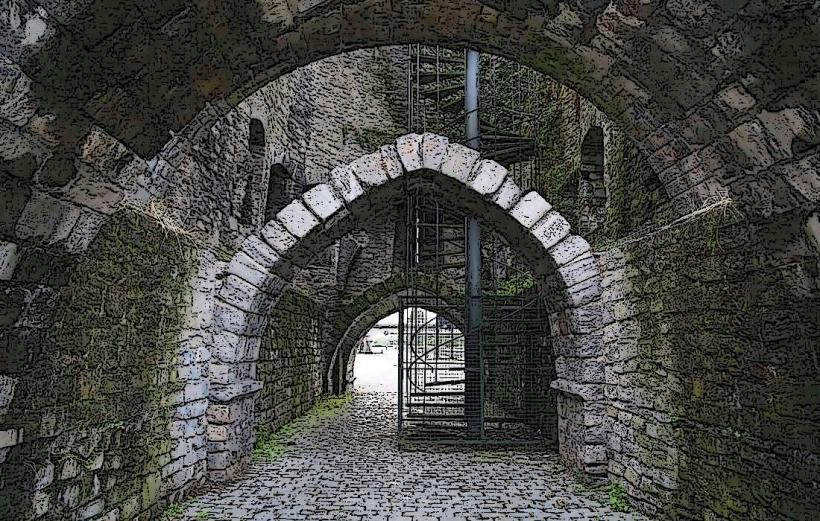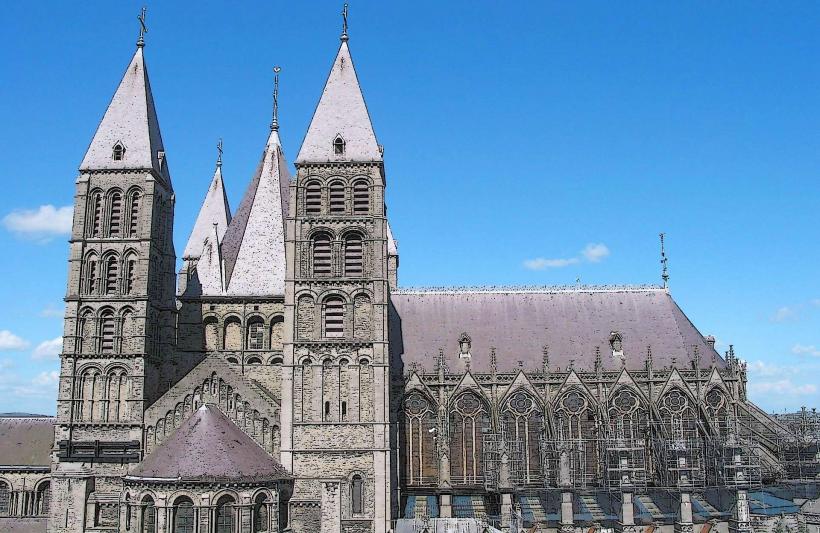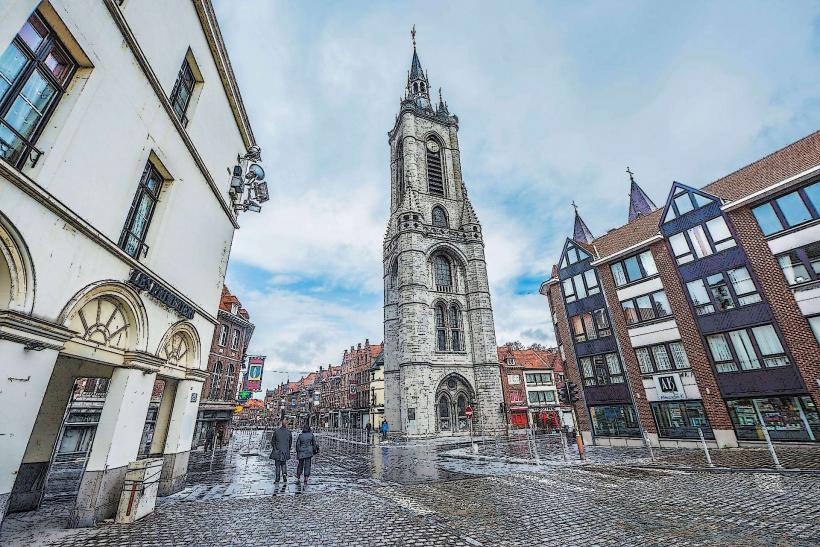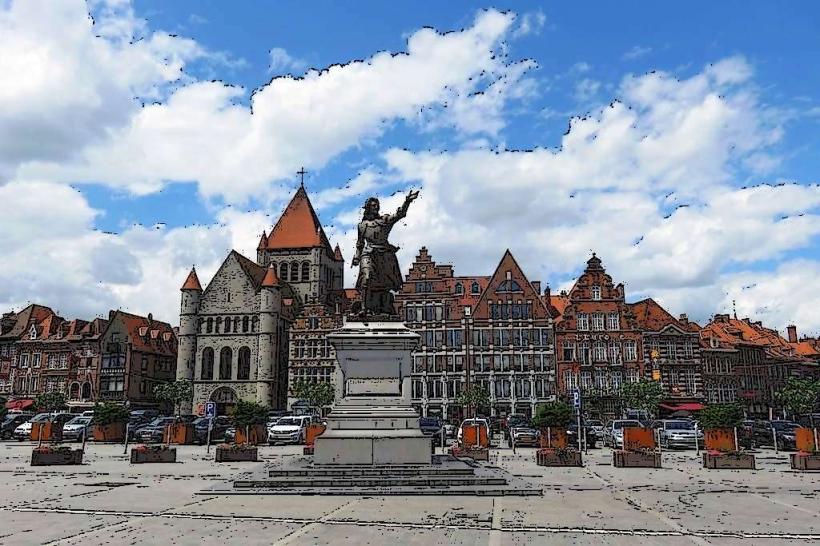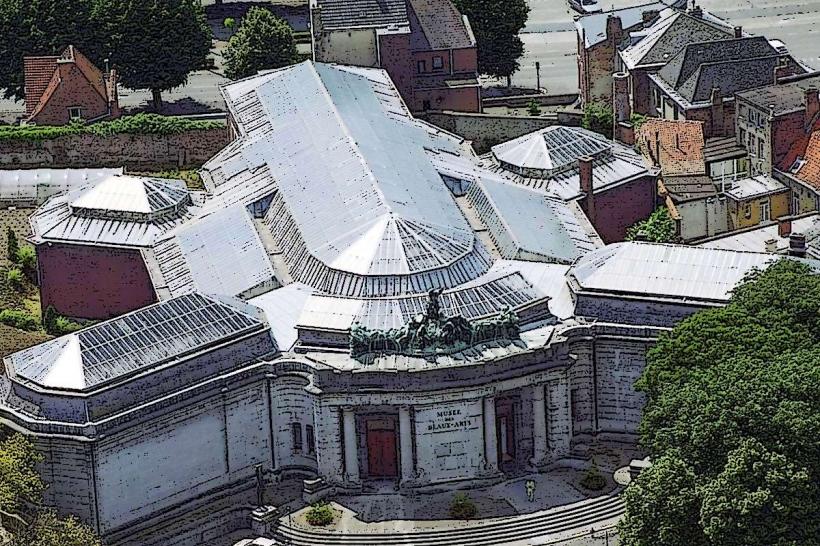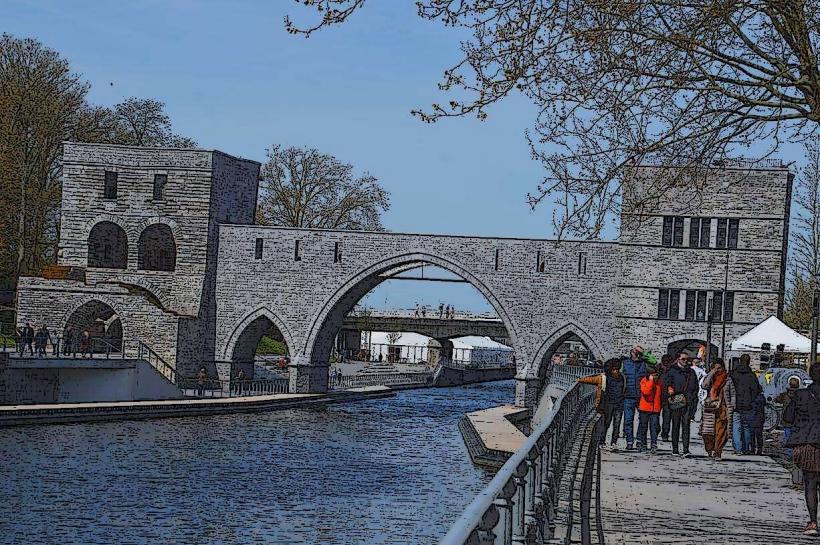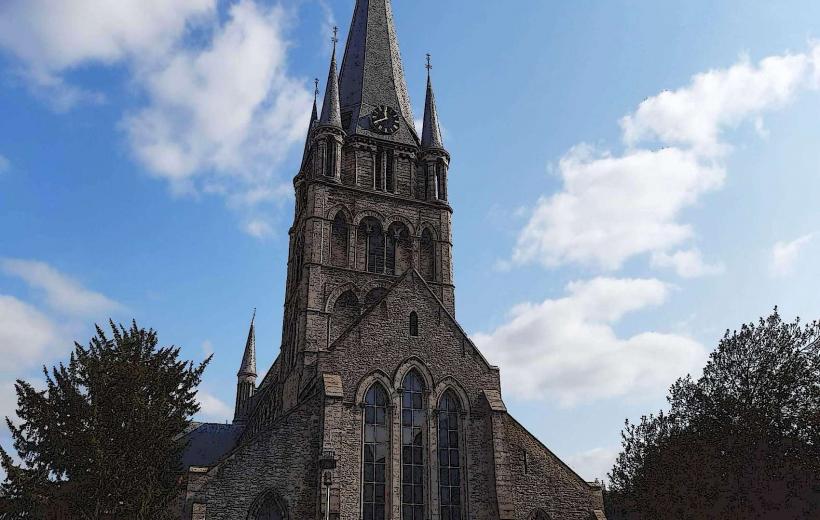Information
Landmark: Tournai Cloth HallCity: Tournai
Country: Belgium
Continent: Europe
The Tournai Cloth Hall (Le Halles aux Draps or Halle aux Draps de Tournai) is an iconic historical building in Tournai, Belgium, known for its architectural and historical significance. The building dates back to the medieval period and is closely tied to the city's role in the cloth industry during the Middle Ages.
Historical Background
Foundation and Purpose: The Cloth Hall was originally built in the 13th century, around 1240, to serve as a market for cloth and textiles. During the medieval period, Tournai was one of the most important centers for the production of woolen cloth in northern Europe. The cloth trade played a significant role in the city’s economy and prosperity.
Commercial Importance: The building was designed to house merchants and traders dealing with cloth, and it became a bustling center for the trade of this valuable commodity. The city's prosperity during this time was closely linked to its textile industry, which was highly regarded in Europe. Tournai’s woolen cloth was in high demand, particularly in countries such as England, France, and the Netherlands.
Role in the Medieval Economy: The Tournai Cloth Hall was not only a marketplace but also a symbol of the city's wealth and commercial importance. Cloth halls like this one were common in medieval towns with thriving textile industries, and Tournai's Cloth Hall is one of the best-preserved examples of this type of building.
Architectural Features
Design and Structure: The Cloth Hall is an example of medieval Gothic architecture, with a large rectangular structure that was designed to accommodate multiple merchants and their goods. The building is characterized by a high vaulted ceiling with pillars supporting the roof and providing a wide open space for commerce.
Facade and Exterior: The building’s façade is adorned with Gothic arches and decorative elements that reflect the style of the period. The exterior has a grand, imposing appearance, with the entrance marked by a large archway leading into the central hall. The structure is built from stone and features large windows that let in natural light to illuminate the trading space inside.
Functionality: The hall itself was designed with open spaces for merchants to display their goods and for buyers to walk through and negotiate prices. Over time, as the trade of cloth continued to be vital to the region, additional storage and workshops were added to the building to support the industry.
Renovations and Alterations: Over the centuries, the Tournai Cloth Hall has undergone several renovations and modifications, particularly in the 18th century. These changes were made to adapt the building to evolving commercial and urban needs, but many of its original medieval features have been preserved.
Cultural and Economic Significance
Economic Hub: In the Middle Ages, the Cloth Hall was not only a commercial space but also a symbol of the city’s economic power. Tournai was known for its high-quality cloth production, and the Halles aux Draps represented the city’s status as a leading European textile center. The wealth generated by the cloth industry allowed Tournai to flourish as an important urban center.
Role in Tournai’s History: The Cloth Hall stands as a reminder of Tournai’s medieval importance in the European textile trade. It is part of the city's historical legacy and highlights its contribution to the broader Flemish and European economy during the Middle Ages.
Modern Day Use
Cultural Venue: Today, the Cloth Hall no longer serves as a marketplace for cloth. Instead, it has been repurposed as a cultural venue. The building is often used for exhibitions, events, and public gatherings. It plays an important role in preserving the city’s historical character while serving contemporary cultural purposes.
Tourist Attraction: As one of Tournai’s major historical landmarks, the Cloth Hall attracts many visitors, including those interested in medieval architecture, history, and industrial heritage. Its location in the heart of Tournai makes it a key stop for tourists exploring the city.
Educational Space: In addition to hosting events, the Cloth Hall has also been used as an educational space, hosting exhibits that focus on Tournai’s history, the medieval cloth trade, and the cultural heritage of the region.
Architectural Legacy
The Tournai Cloth Hall is considered an important example of medieval commercial architecture, and it reflects the city’s significant role in the medieval economy. While similar halls can be found in other European cities, Tournai’s Cloth Hall is one of the most notable due to its preserved structure and the central role it played in the city’s economic life.
Conclusion
The Tournai Cloth Hall is an emblem of the city’s medieval prosperity and its significant role in the textile industry. With its Gothic design, storied history, and modern-day use, the Cloth Hall stands as a vital part of Tournai’s cultural heritage. Today, it continues to be an important landmark in the city, offering a glimpse into the past while serving as a center for cultural and public events.

